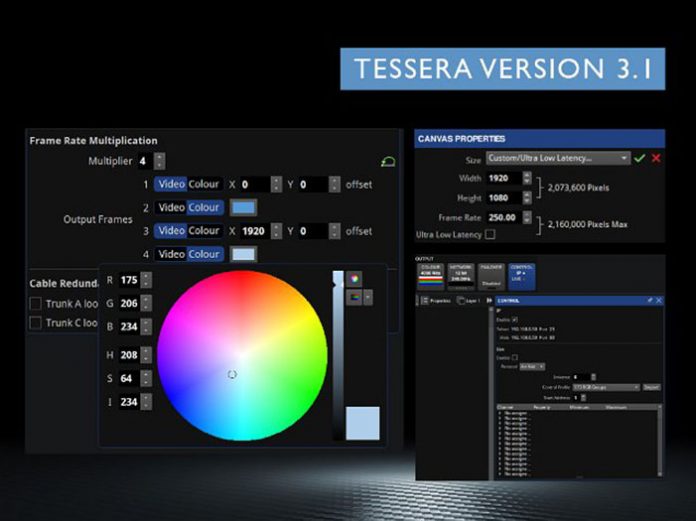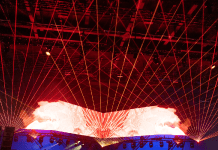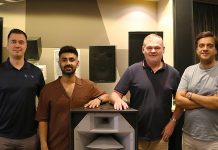LED processor manufacturer, Brompton Technology, has announced the release of its new Tessera V3.1 software, providing users of Tessera SX40 and S8 LED processors with a host of features including HFR+ and Frame Remapping that deliver key benefits for creatives working in virtual production and cinematography, as well as for markets such as sports broadcast, simulation and virtual reality.
Tessera’s High Frame Rate (HFR) function already gives the power to display the video content on an LED screen at up to 144 fps (frames per second). The latest Tessera update extends this with HFR+, allowing the Tessera SX40 and S8 to support up to a massive 250 fps. This gives smoother visuals in eSports and simulator applications using high-frame rate content, where the shortened duration of each video frame also brings the benefit of reduced motion blur. HFR+ also makes it possible to shoot slow motion visual effects with over-cranked cameras against LED screens and still retain perfect synchronisation between screen and camera.
“The maximum framerate available will depend on the panel type(s) in use and may range from 60fps to a maximum of 250fps,” explains Chris Deighton, Brompton’s CTO. “The maximum framerate for each panel type can be viewed in the processor’s Fixture Library screen, or by using Tessera Remote in Offline Editor mode if no hardware is available. Combining the maximum framerate of 250fps with our existing Ultra Low Latency mode delivers an incredible end-to-end system latency of just 4ms.”
Frame Rate Multiplication is another pre-existing feature in Tessera software which gives the ability to output each input frame multiple times to create a higher output framerate on the LED screen, and is a useful tool to ensure a camera will see a complete image every time its shutter opens.
This is augmented in Tessera V3.1 with a new Frame Remapping feature that allows the user to interleave different areas of the video raster or solid colours in the output. At its most simple, this allows the output framerate to be doubled so that a black frame can be inserted between every frame of actual content – another useful technique for reducing motion blur. Any 24-bit RGB colour may be specified for each output frame, including black (for dark frame insertion), white (for supplemental lighting) or solid colours (such as green for visual effects).
“There are so many potential applications that open up a new world of possibilities for creatives,” said Chris. “For example, when filming an LED screen with multiple cameras, Frame Remapping could allow each camera to see its own unique render perspective. Or maybe you want to see alternative content on the screen that is only displayed while the camera shutter is closed.”
Accompanying these video performance enhancements is a powerful new IP Control capability for tighter integration with third-party or custom control systems. All Brompton Tessera processors now support both HTTP and raw TCP, allowing both status monitoring and remote control of key screen parameters such as brightness or input source.
“Techniques for virtual production are evolving fast, and Brompton Technology is committed to providing the tools required. With this latest Tessera software version, we are directly responding to the current demands of our many customers already working in this space,” concluded Chris. “We are also hoping to anticipate their future demands by developing features that we believe will prove invaluable as the industry continues to adopt Virtual Production and Extended Reality technology as an effective toolset to produce powerful and highly immersive content.”






